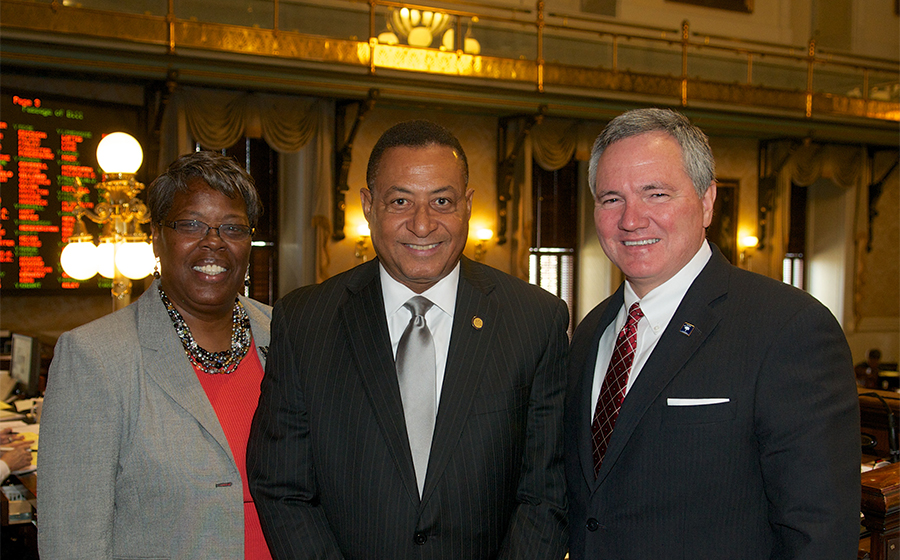Solar power is the nation’s fastest growing source of alternative energy. According to the most recent data available from the Solar Energy Industries Association, a new solar power system, including those in solar farms, commercial buildings, and residential rooftops, is installed in the U.S. every four minutes.
In 2012, more than 323,000 homeowners and businesses used solar panels to generate power – more than double the 151,000 in 2010. Over the past 18 months, more rooftop residential and commercial solar installations were completed than in the previous three decades combined.
These types of on-premises power systems are part of a larger aspect of the energy space known as “distributed generation.” Distributed generation basically decentralizes power generation to the customer’s property. It turns homes into miniature power plants that can provide energy for the consumer’s use and when there is excess electricity generated, it can be sold onto the grid.
A driving force behind the rapid increase in use of distributed generation platforms like solar has been the usage of net metering. Net metering is the billing mechanism that allows consumers with distributed generation to bring their bills to zero; in some instances, customers can even earn enough credits to use toward future payment cycles. At certain times of the day, a consumer’s rooftop solar platform may produce more electricity than needed for his/her home. When production exceeds demand, the excess energy is transferred to the utility, running the meter backwards and crediting the customer’s account.
Net metering policies vary by state, but most allow consumers with distributed generation to be compensated at the average retail utility energy rate. Retail rates include not just the cost of the power, but all the other costs of bringing that power to the customer – costs associated with maintaining electric poles, wires, meters, and other infrastructure that make the grid safe and reliable. Today 43 states, plus the District of Columbia, have implemented net metering policies, and many of these states also credit consumers at the retail rate. This means that people without solar powered homes pay for the benefits being primarily enjoyed by the people financially able to afford the solar system in the first place.
What does all of this mean for consumers who are not generating their own power? To answer that question, start with the fact that net-metered households must still connect to the electric grid.
 Rep. Joe Gibbons (FL) pictured with Rep. Gilda Cobb-Hunter (SC) and House Speaker Bobby Harrell (SC) after testifying on net metering legislation.The costs of maintaining the grid do not decrease because some customers install solar panels and require less energy from the utility companies. State laws require utility companies to ensure that the electric grid is maintained at all times and is able to meet all customers’ needs 24/7. The reliability of the grid is very important and often taken for granted. Ultimately, as more customers consider distributed generation and take advantage of the economics of net metering, the “saved” money needed to maintain the grid will come from the customers who cannot afford to take advantage of solar power.
Rep. Joe Gibbons (FL) pictured with Rep. Gilda Cobb-Hunter (SC) and House Speaker Bobby Harrell (SC) after testifying on net metering legislation.The costs of maintaining the grid do not decrease because some customers install solar panels and require less energy from the utility companies. State laws require utility companies to ensure that the electric grid is maintained at all times and is able to meet all customers’ needs 24/7. The reliability of the grid is very important and often taken for granted. Ultimately, as more customers consider distributed generation and take advantage of the economics of net metering, the “saved” money needed to maintain the grid will come from the customers who cannot afford to take advantage of solar power. If we continue down this path, we will soon find ourselves in an unfortunate situation. At present, a customer’s electricity bill has both a fixed component (to cover the delivery and safety aspects related to energy services) and a variable component (to cover actual generation of electricity). You pay for what you use but everyone shares the cost of the network. This structure is extremely equitable in socializing all of the costs associated with electricity consumption. However, when solar-generating customers spin their meters backwards by selling excess energy back to the utility at the full retail rate, they pay neither the fixed nor the variable components. In turn, those costs are shifted to customers who cannot afford to install solar panels or otherwise participate in distributed generation. As a result, those without solar panels on their roofs – particularly low-and middle-income consumers – are likely to see an increase in their bill to make up for the loss of revenue from homes with rooftop solar.
This burden is not just theoretical. The California Public Utilities Commission recently released a study on the regressive impact of net metering. According to the California Net Energy Metering Evaluation, the subsidization of the mostly affluent homes (those with annual incomes over $91,000) will cost the state’s non-solar customers a stunning $1.1 billion a year by 2020.
In order to ensure fair pricing across the board, both for net-metered and non-net- metered consumers, policymakers must commit to studying net metering cost allocations on a state-by-state basis. Each state’s public service commission should conduct a careful analysis that measures the costs and any potential benefits of their net metering policies on consumers and the grid.
We should all be pleased with the growth of solar energy and fully support its inclusion along with other renewables in the nation’s energy portfolio. However, we cannot endorse regressive policies that burden citizens least able to afford it. All residential and business consumers who use the electric grid should contribute to support its maintenance and ensure its reliability.
This is why NBCSL’s recent resolution, Urging Equitable Distribution of Electricity Grid System Costs, encourages state policymakers to recognize the value the electric grid delivers to all customers and update their state’s net metering policies to ensure that all consumers pay their fair share to maintain the grid.
I urge state policymakers to ensure that the laudable goal of ubiquitous solar generation is not derailed by regressive cost-allocation schemes that place grid maintenance costs on the backs of poor, middle-and- fixed-income consumers. We are all in this together. Our policies must ensure that everyone pays his/her fair share and that every family experiences the benefits of solar power, regardless of race, income, or location.










